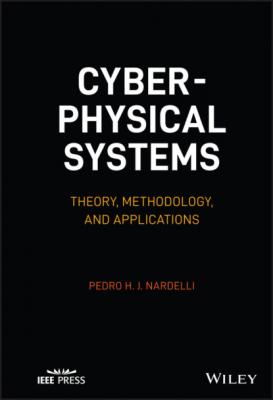Cyber-physical Systems. Pedro H. J. Nardelli
Читать онлайн.| Название | Cyber-physical Systems |
|---|---|
| Автор произведения | Pedro H. J. Nardelli |
| Жанр | Личные финансы |
| Серия | |
| Издательство | Личные финансы |
| Год выпуска | 0 |
| isbn | 9781119785187 |
An important remark is that sciences as theoretical discourses are historical and objective, holding a truth value relative to what is scientifically known at that time considering limitations in both theoretical and experimental domains. In this sense, scientific practice is an open‐ending activity constituted by historically established norms. These norms, which are not the same for the different sciences and are internally defined through the scientific practice, determine the valid methodologies to produce scientific knowledge. Once established, this knowledge can then be used as raw material not only for the scientific practice from where it originates but also it can be (directly or indirectly) employed by other practices. As demonstrated in, for example, Noble [13], Feenberg [14], the scientific and technical development as a historical phenomenon cannot be studied isolated from the society and its articulation with the social whole becomes necessary.
From this perspective, this book will pedagogically construct a scientific foundation for CPSs based on existing scientific concepts and theories without distorting and displacing their specific objects. The resulting general theory will then be used to explain and explore different particular existing realizations of the well‐defined abstract scientific object called CPS following the three proposed scientific rationalities. We are now ready to discuss the book structure and its rationale to then start our theoretical tour.
1.5 Book Structure
This book is divided into three main parts with ten core chapters, plus this introduction and the last chapter with my final words. The first part covers Chapters from 2 to 6, and focuses on the key concepts and theories required to propose a new theory for CPSs, which is presented in Chapters 7 and 8 (the second part of this book). The third part (Chapters 9, 10, and 11) deals with existing enabling technologies, specific CPSs, and their social implications
Part 1 starts with systems – the focus of Chapter 2, where we will revisit the basis of system engineering and then propose a way to demarcate particular systems following a cybernetic approach. Chapter 3 focuses on how to quantify uncertainty by reviewing the basis of probability theory and the concept of random variable. In Chapter 4, we will first define the concept information based on uncertainty resolution and then discuss its different key aspects, which includes the relation between data and information, as well as its fundamental limits. Chapter 5 introduces the mathematical theory of graphs, which is applied to scientifically understand interactions that form a network structure, from epidemiological processes to propagation of fake news. Decisions that determine actions are the theme of Chapter 6 discussing different forms of decision‐making processes based on uncertainty, networks, and availability of information. Since decisions are generally associated with actions, agents are also introduced, serving as a transition to the second part.
Part 2 is composed of two dense chapters. Chapter 7 introduces the concept of CPS as constituted by three layers, which are interrelated and lead to a self‐developing system. In Chapter 8, such a characteristic is further explored by introducing different approaches to model the dynamics of CPSs, also indicating performance metrics and their possible optimization, as well as vulnerabilities to different kinds of attacks. With these scientific abstractions, we will be equipped to assess existing technologies and their potential effects, which is the focus of the third part of this book.
Part 3 then covers concrete technologies and their impacts. Chapter 9 presents the key enabling ICTs that are necessary for the promising widespread of CPSs. Chapter 10 aims at different real‐world applications that, following our theory, are conceptualized as realizations of CPSs. Chapter 11 is devoted to aspects beyond technology related to governance models, social implications, and military use.
At the end of each chapter, a summary of the key concepts accompanied by the most relevant references are presented followed by exercises that are proposed for the readers to actively learn how to operate with the main concepts.
1.6 Summary
In this chapter, we highlighted the reasons why a general scientific theory of CPSs is needed. We have briefly reviewed the beginnings of two related scientific fields, namely control theory [4] and information theory [12], contrasting them with the more philosophically leaned cybernetics as introduced by Wiener in [6]. To avoid potential threats of theoretical displacements of scientific theories, we have explicitly stated the philosophical standpoint taken in this book: science is a formal discourse holding true objective knowledge about well‐defined abstract objects, which produces a knowledge effect on particular concrete objects. Scientific theories are then the result of a theoretical practice that produces new knowledge from historically determined facts and knowledges following a historically determined normative method of derivation and/or verification, which depends on the science/object under consideration. This leads to a philosophical classification that identifies three broad classes of scientific rationalities, helping to avoid misunderstandings of scientific results. The philosophical position taken here follows the key insights introduced by L. Althusser [8, 9], and I. Prigogine and I. Stengers [10]; the classification of different scientific rationalities is motivated by the work of Lepskiy et al. [11, 15] (although I do not share their philosophical position).
Exercises
1 1.1 Daily language and scientific concepts. The idea is
